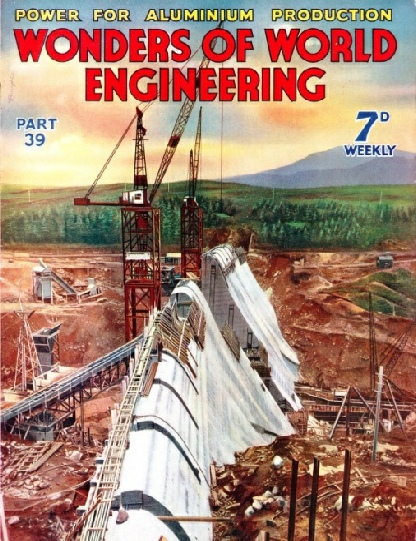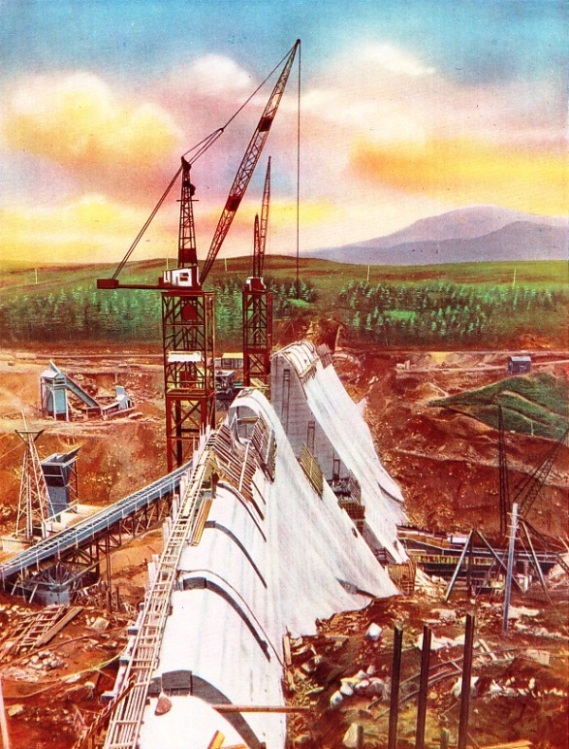

© Wonders of World Engineering 2014-




Part 39
Part 39 of Wonders of World Engineering was published on Tuesday 23rd November 1937, price 7d.
Part 39 includes a colour plate showing the building of Laggan Dam. It formed part of the article on Aluminium Production.
The Cover
The photograph which is reproduced this week as a cover and as a colour plate was supplied to me by C. S. Meik & Halcrow, the engineers responsible for the Lochaber Power Scheme, which is described in this week’s Part. The photograph shows the later stages in the construction of the Laggan Dam, which was built across the River Spean in a gorge about five miles below Loch Laggan. The dam is a mass concrete structure 700 feet long at spillway level, and is 175 feet high. The first operation was to build a bridge for the contractors’ railway across the gorge just above the site of the dam. The central 200-feet span of this bridge was carried by two tall steel towers, on top of which were mounted the cranes for handling the concrete used in the dam.

Contents of Part 39
Story of the Tay Bridges (Part 2)
The story of the bridging of the Firth of Tay after a disastrous failure in a battle against the forces of Nature. This chapter is concluded from part 38. It is the thirteenth article in the series Linking the World’s Highways.
Manufacture of Cane Sugar
From raw material which consists of sugar canes perhaps 10 feet long, modern mills produce sugar of high quality, the chief waste product being used as fuel for the boilers which supply power for the manufacturing processes. This chapter describes the manufacture of cane sugar from sugar cane. This article is the third article in the series Industrial Machinery at Work.
Aluminium Production
A tunnel fifteen miles long, under Ben Nevis, is but one of the major feats of engineering involved in the building of the huge hydro-electric undertaking to give power for the production of aluminium in the Scottish Highlands. It is one of the major engineering triumphs of the Lochaber power undertaking, a scheme by which hydro-electric power is provided for the manufacture of aluminium at Fort William, Inverness-shire. This chapter describes the production and applications of aluminium, and will explain how engineers put into operation in the Highlands of Scotland one of the largest hydro-electric schemes of its kind.
This article is the fifth article in the series Wonders of Water Power.
Building Laggan Dam (colour plate)
Building Laggan Dam
BUILDING LAGGAN DAM, one of the dams designed in connexion with the Lochaber scheme for the provision of hydro-electric power for the production of aluminium at Fort William, Inverness-shire. The dam is a mass concrete structure 700 feet long at spillway level, and is 175 feet high. The first operation was to build a bridge for the contractors’ railway across the gorge just above the site of the dam. The central 200-feet span of this bridge was carried by two tall steel towers, on top of which were mounted the cranes that handled the concrete used in the dam.
